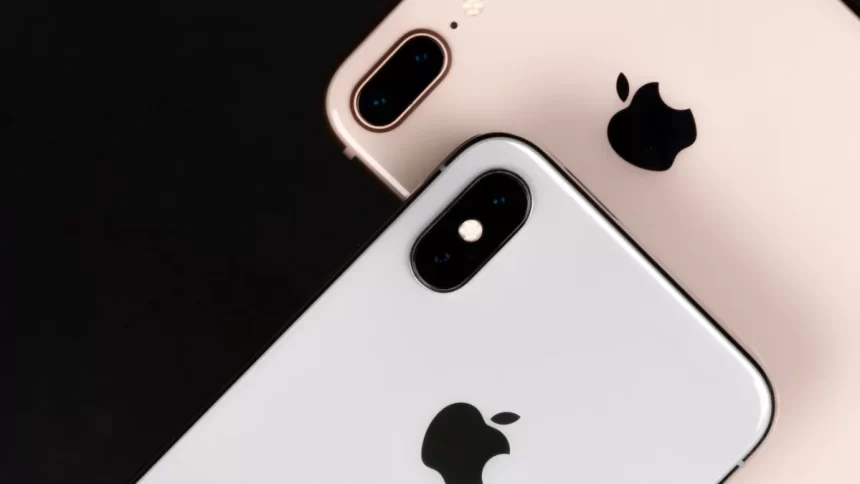While the development of technology in the smartphone industry is still progressing fast, it is not progressing at the same pace it did a decade ago. Typically, there isn’t a huge performance difference between flagship phones released in subsequent years. As such, a phone released last year or even two years ago will perform well and meet the needs of most phone users today.
This is where buying second-hand phones comes in.
You don’t have to fork thousands to purchase a high-end phone. Why not purchase a second-hand phone, which will most likely meet your needs?
What Are Used/Preowned And Refurbished Mobile Phones?
Not all second-hand phones are the same. There is a difference between used or preowned phones, sold by the user once they don’t need them, and refurbished phones. Refurbished phones are typically fully reconditioned by the manufacturer (manufacturer-refurbished) or the retailer (retailer-refurbished). Before selling the second-hand phone on a reputable website such as fonez.ie, the manufacturer or retailer usually repairs and replaces faulty part such as the battery and sometimes replace the case if it is dinged up or scratched badly.
Generally, manufacturer-refurbished phones are the most expensive on the second-hand phone market, followed by retailer-refurbished ones. Pre-owned/used phones sold by individuals on sites like eBay tend to be the cheapest phones.
Things to Consider When Buying a Used Android Phone
When you’re in the market for a second-hand phone, here are some of the things you need to consider:
#1. Buy A Preowned/Used Or Refurbished?
While Refurbished phones are more expensive, they come with many perks. They feel and function as new, come with phone accessories, and, importantly, it comes with a warranty. On the other hand, used phones tend to be cheaper but might come in a wide array of conditions. Additionally, used phones might not come with accessories.
Depending on comfort level and budget, you can opt for the more expensive refurbs or the cheaper preowned phones.
#2. The Condition Of The Phone
If you decide to purchase a manufacturer-refurbished phone, chances are they will be more thorough in reconditioning it to ensure they only sell products that meet their high standards. They will replace defective parts and might go as far as replacing the case.
However, if you purchase a retailer-refurbished phone, they tend to categorise phones under different categories and sell them at different price points. Generally, they have Grades A to D, with A being the phone with the best condition and D the worst condition. Generally, you should go for the highest grade to negate the chances of purchasing a defective or troublesome phone.
When purchasing preowned phones, you must inspect them to ensure they function properly. To this end, check the physical condition of the phone, test the mouth and ear pieces by making a call, the speakers by playing music, test the camera, and inspect the condition and functionality of physical buttons.
#3. Charging Port And Battery State
The charging port and battery are typically the first parts of the phone to break. As such, check the charging port for any damage. If possible, test the port to ensure it works well. Also, ensure the battery is in good working condition. Most smartphones come with a battery health checker. For some Android phones, you might have to install a third-party app. A health capacity of 90% and above means the battery is good. Anything less than 80% means the battery needs to be replaced.
#4. Proof of Purchase
Proof of purchase is an essential part of purchasing a second-hand phone. When purchasing a used phone from a private vendor, ask the seller to provide their original receipts. You can use the original receipts to ascertain whether the vendor is the legitimate owner of the phone. That way, you’ll negate the chances of purchasing stolen property.
Similarly, you can further ensure the phone is not listed anywhere as stolen (or fake). Use online IMEI tools to check the legitimacy of the phone, its IMEI, and serial numbers.
However, when purchasing a second-hand phone from a manufacturer-refurbished or retailer-refurbished, they will have carried out the proof of purchase step. As such, you do not need to request the original receipts.
#5. Warranty Considerations
Warranty consideration tie-in with the availability of original receipts. Aside from finding out how long the seller has used the phone, you’ll need the original receipts to determine whether the phone is still under warranty. A warranty makes it cheaper to repair the phone should anything go amiss. However, if you’re comfortable purchasing a phone out of warranty, it is your decision.
When you purchase your phone from a manufacturer- or retailer-refurbished program, they might run a product warranty program.
#6. Availability Of OS Updates
Manufacturers only support their phones up to some point. Thereafter, they do not release security updates and updates for their operating systems. The older the phone, the less chance the phone manufacturer will support it, especially for Android phones. Apple tends to support iPhones for longer than Android phones. Android phone manufacturers tend to provide updates for about 2 years.
As such, check the phone release date and operating system version before purchasing to ensure you receive security and operating system updates for as long as possible.
#7. Compatibility With Your Carrier
Some phones are locked to a specific carrier. With this in mind, only purchase phones that are unlocked or locked to your carrier. Additionally, when purchasing unlocked phones, ensure they are s with support your carrier’s network – either CDMA or GSM. Some phones only support GSM or CDMA. Others support both.
Lynn Martelli is an editor at Readability. She received her MFA in Creative Writing from Antioch University and has worked as an editor for over 10 years. Lynn has edited a wide variety of books, including fiction, non-fiction, memoirs, and more. In her free time, Lynn enjoys reading, writing, and spending time with her family and friends.















